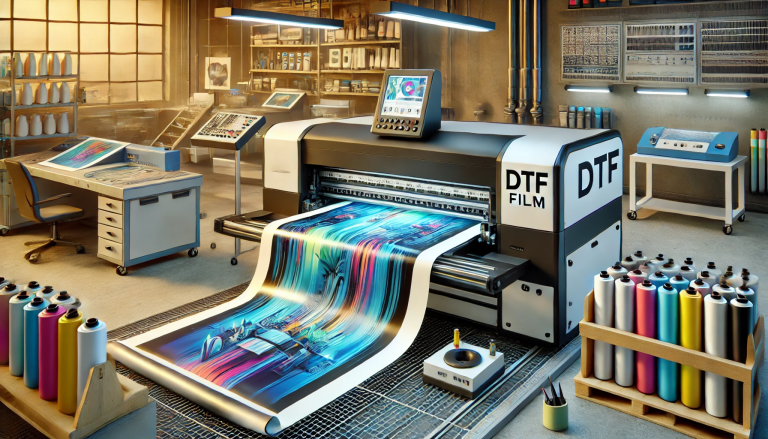In the ever-evolving world of digital printing, Direct to Film (DTF) printing has emerged as a groundbreaking technology, revolutionizing the way we think about textile design and decoration. This innovative printing method involves printing graphics onto a special film and then transferring them onto various fabrics. Unlike traditional printing techniques, DTF printing offers unparalleled versatility, quality, and ease of use, making it a preferred choice for both industry professionals and hobbyists. This article explores the ins and outs of DTF printing, its benefits, applications, and how it stands to reshape the future of textile printing.
The Basics of DTF Printing
At its core, DTF printing is a two-step process. First, designs are digitally printed onto a clear polyester film using special water-based ink. After printing, a powder adhesive is applied to the wet ink, which is then dried and cured. The final step involves transferring the design from the film to the fabric using heat and pressure. This method allows for high-quality, vibrant prints that are durable and flexible.
Advantages over Traditional Printing Methods
One of the most compelling advantages of DTF printing is its compatibility with a wide range of fabrics, including but not limited to cotton, polyester, and silk. This versatility opens up endless possibilities for designers and manufacturers to explore creative designs on a variety of textiles without worrying about the limitations imposed by traditional printing methods like screen printing or direct to garment (DTG) printing.
Moreover, DTF printing eliminates the need for pre-treatment of fabrics, a requisite step in DTG printing, thus streamlining the production process. It also boasts a superior color spectrum and detail fidelity, thanks to the precision of digital printing. These prints are not only vivid but also highly durable, withstanding washes and wear without significant degradation in quality.
The Environmental Edge
In addition to its technical and aesthetic advantages, DTF printing is also gaining traction for its environmental benefits. The process is significantly less wasteful compared to traditional methods, as it reduces the amount of water and energy used. Moreover, the inks used in DTF printing are generally more eco-friendly, containing fewer harmful chemicals. This aspect is increasingly important in an industry under scrutiny for its environmental impact, making DTF a preferred choice for sustainable textile production.
Applications of DTF Printing
The applications of DTF printing are vast and varied. From fashion and apparel to home decor and promotional items, the potential uses are nearly limitless. This technology enables designers to push the boundaries of creativity, producing intricate and colorful designs that were previously difficult or impossible to achieve. Moreover, the ease and speed of DTF printing make it ideal for small-scale productions and custom orders, offering businesses and consumers alike the opportunity for personalized designs.
Challenges and Future Directions
Despite its many benefits, DTF printing is not without challenges. The initial investment in equipment and materials can be significant, although this is rapidly changing as the technology becomes more widespread and accessible. Additionally, the quality of the final print can be affected by various factors, including the type of film and adhesive used, highlighting the importance of choosing high-quality supplies.
Looking ahead, the future of DTF printing appears bright, with ongoing advancements in technology and materials expected to further enhance its quality, efficiency, and sustainability. As the demand for personalized and environmentally friendly textile products grows, DTF printing stands ready to meet these needs, cementing its role as a key player in the future of textile design.
Conclusion
Direct to Film printing is a transformative technology that has the potential to redefine the landscape of textile design and production. With its unmatched versatility, quality, and environmental benefits, DTF printing is poised to become a staple in the industry. As we move towards a more sustainable and creative future, the adoption of DTF printing by designers and manufacturers worldwide is a testament to its revolutionary impact.




